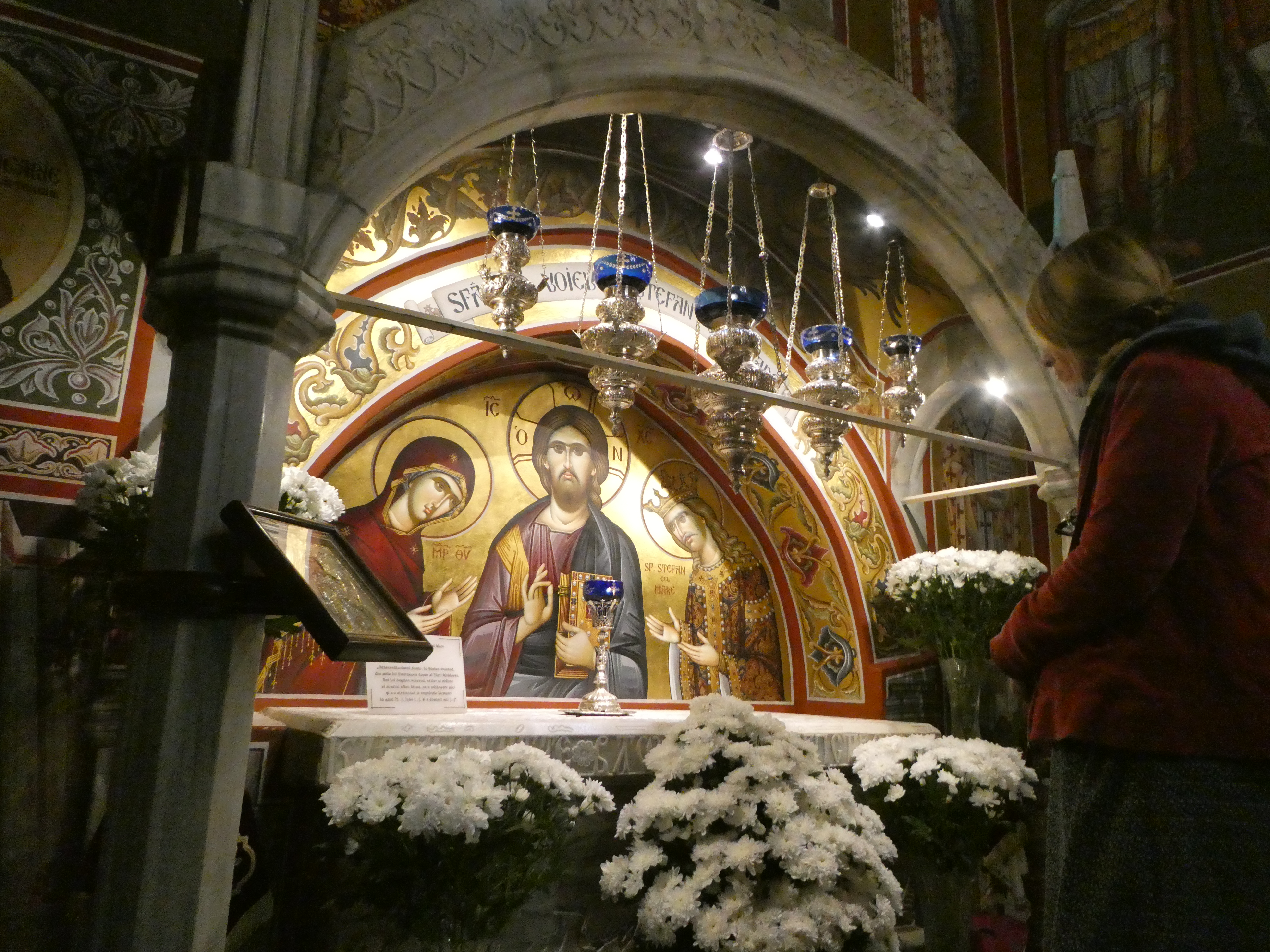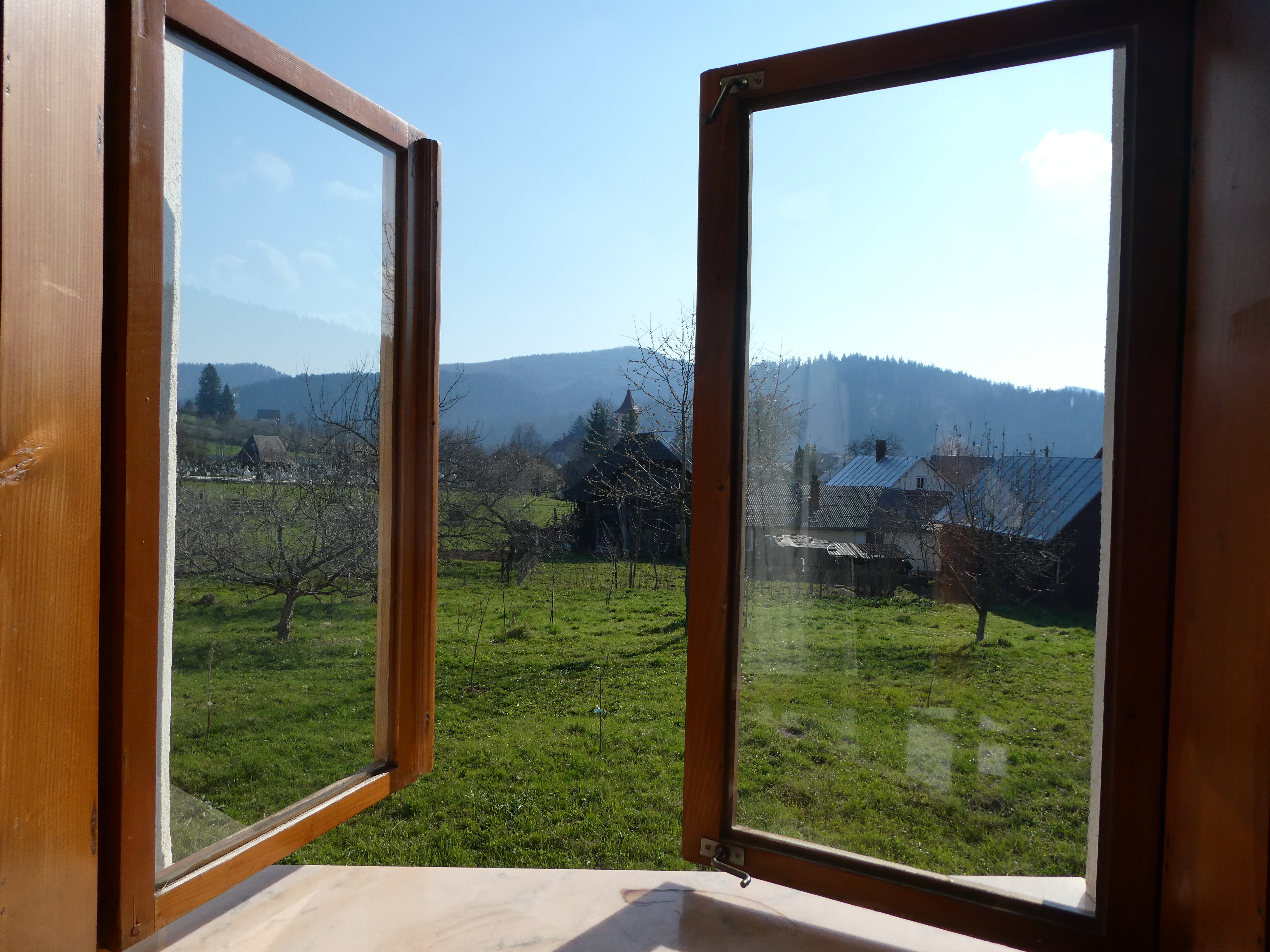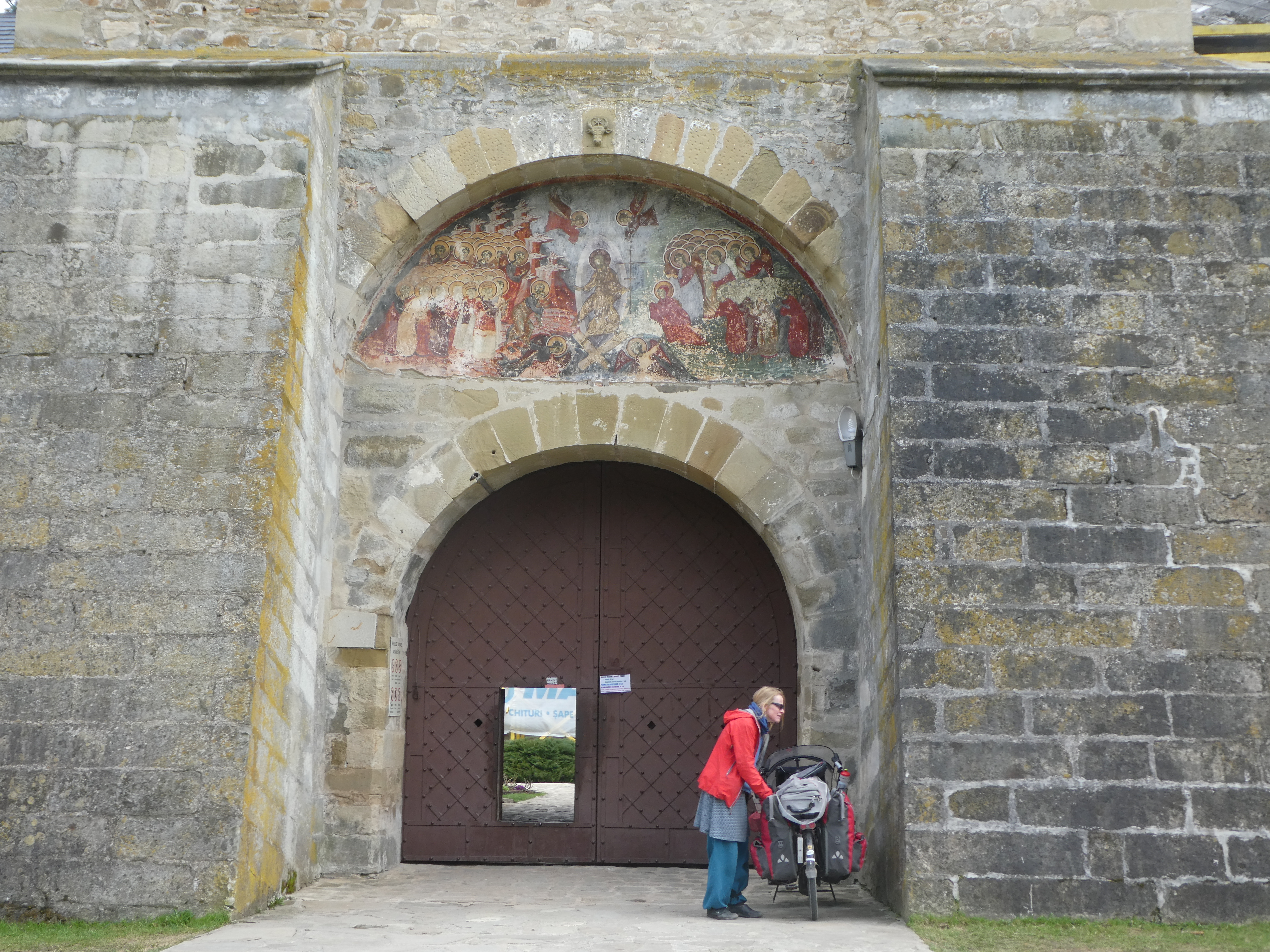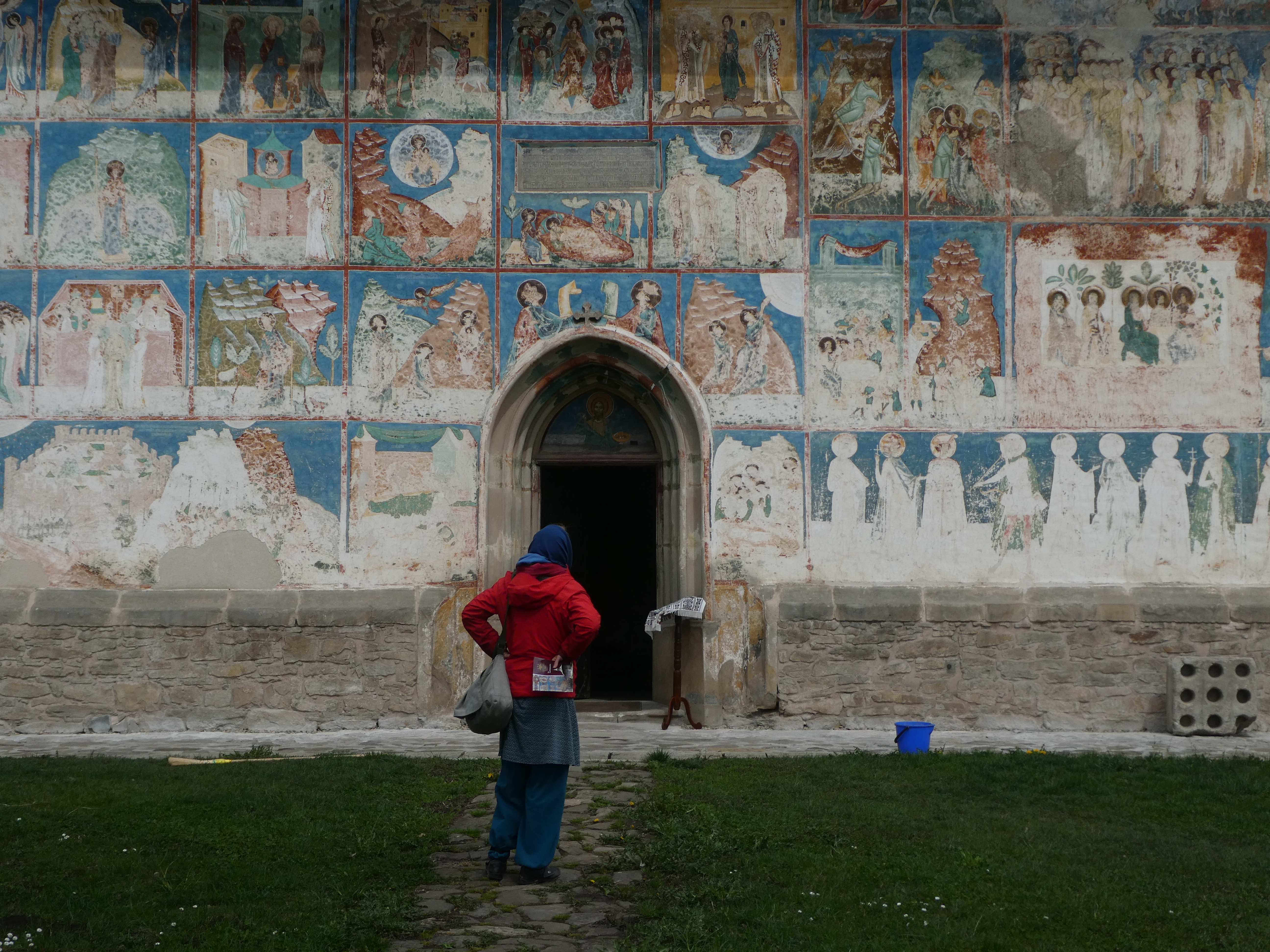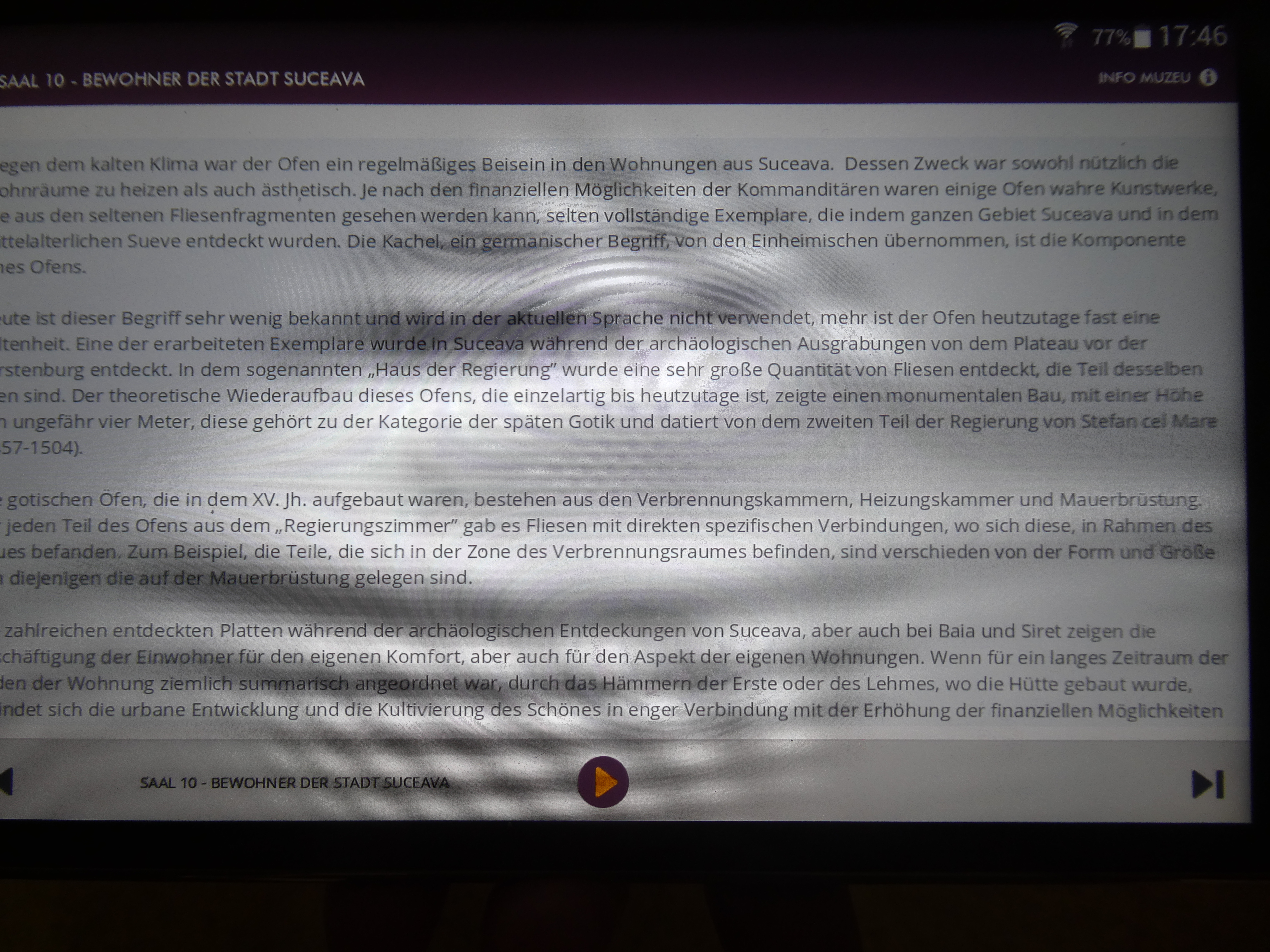Cold harsh North winds slow us down but we have reached Bukovina, home of world-heritage monastaries.
The weather is not as great as we are used to. Most inconveniently the wind blows consistently from the North or if we have to go North West it might change to North West. So we have been moving very slowly and have now come to a stop in Suceava, former capital of Moldova, one of the three major regions that then formed Romania Mare, more or less the present day territory. In two visits we have now managed to look at all 27 + 2 extra rooms of the Bukovina 'istoric museul'. So we have learned a lot about Romanian history and what the contentious issues are e.g. where the "Romanization" = acculturation of the Dakian tribes in the 3rd century A D took place: within or outside of the present territory and how strong the slavic influences were 2000 years ago....
We first tried with a German Audioguide that the brand-newly arranged museum offers. A short quote will suffice to illustrate the difficulties encountered. The English version was at least in complete and correct sentences but was still challenging in terms of understanding context and relationships, we realized once more how priviledged we are to live in countries where information is easily accessible and well presented.
We were truely impressed by the Bukowinian Manastireas from the time when Suceava was capital of Moldova i. e. 14th to 16th century. Donated by the Regent or a high positioned administrator, they are richly illustrated in the inside and many of them also on the outside. While the orthodox illustrations follow a common pattern and way of illustrating that has changed little over the centuries, each monastary features some pecularity, either in colors or in style or by adding new scenes not commonly depicted. After having visited a total of 10 monastaries/churches from the time, and having spent a night in the last one of them, the weather luckily improved and we could continue our journey and cross the Ukranian border. We visited: Probota (where we saw nothing as it is in restoration), Suceava, Voronetz, Humor, Dragomirna, Patrautz, Parhautz (still in a rather deplorable state as not restored yet), Arbore, Sucevitza, and Putna (partially covered as in restoration).
